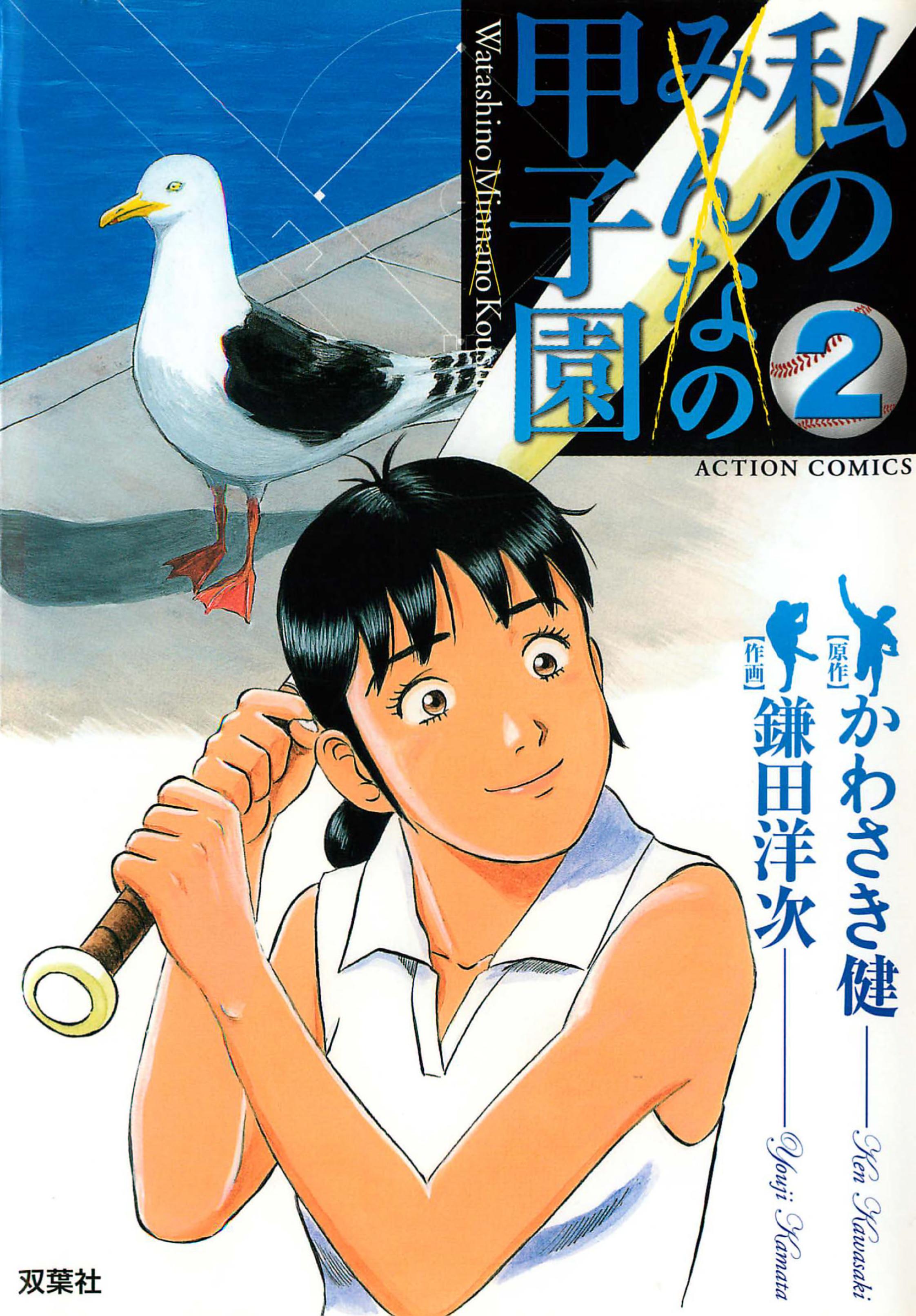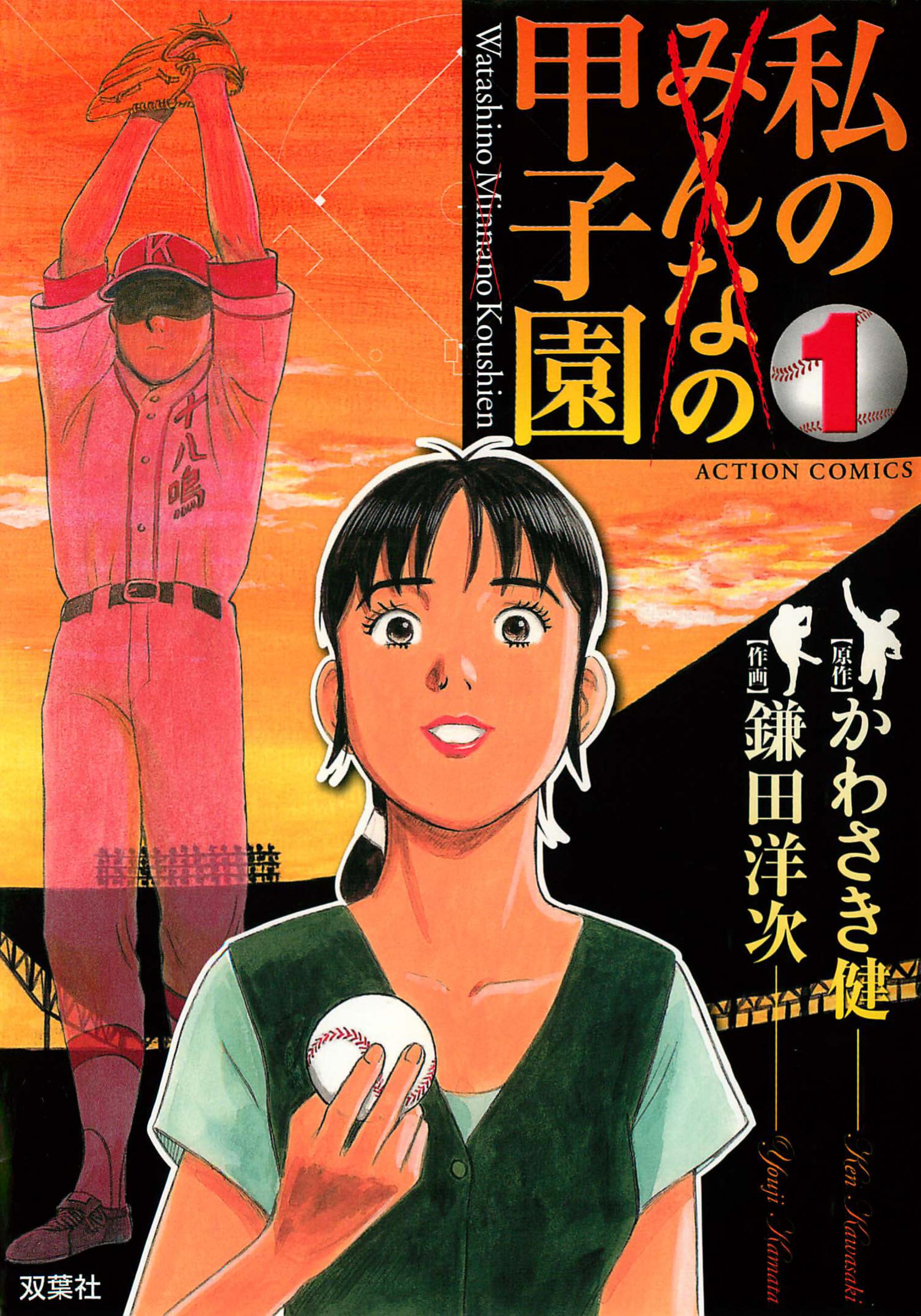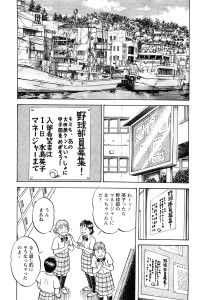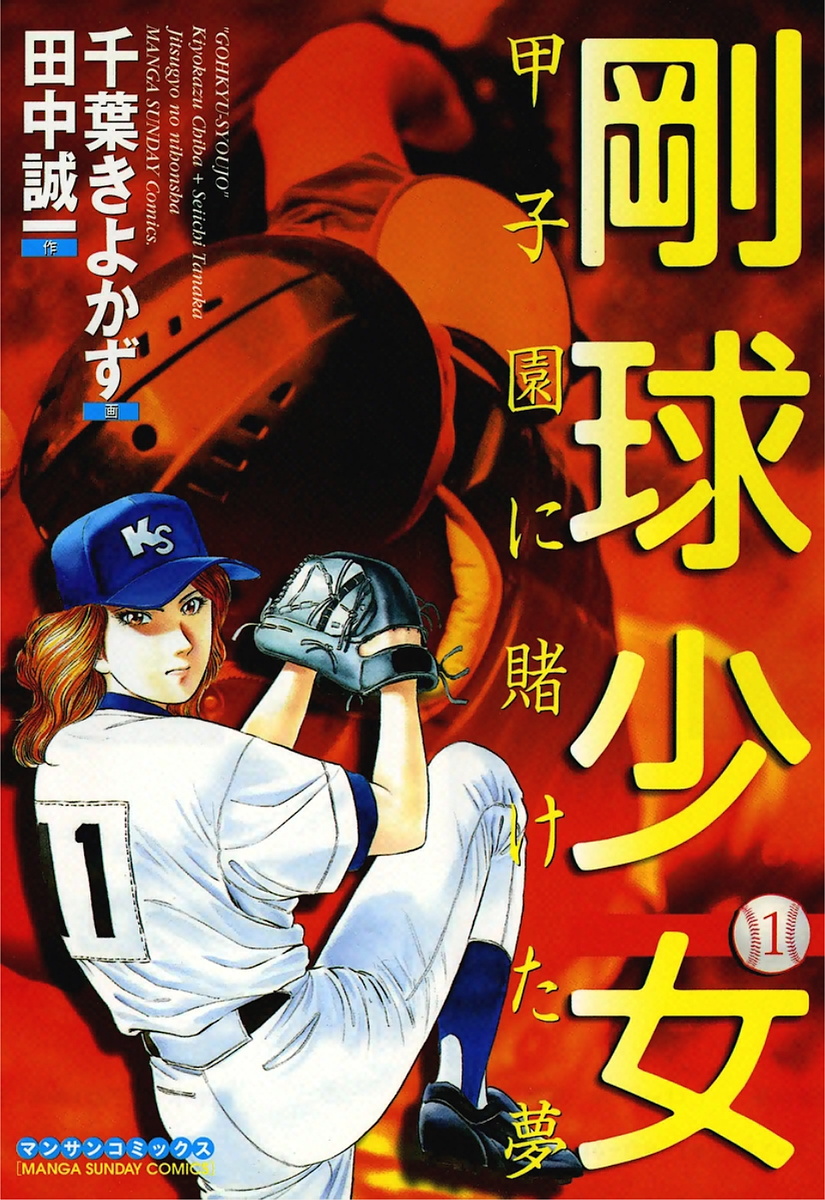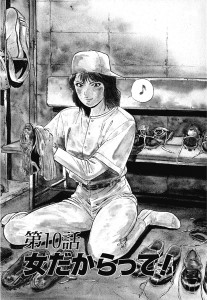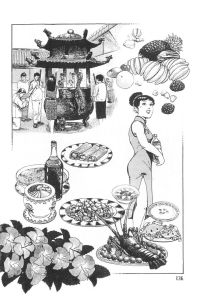Right-ho, continuing where we left off with the Kugunari High School baseball team and their rookie female coach. The entirety of Watashi no Koshien volume 2 is spent on the fall tournament match that was started at the end of the previous volume where the Kugu 9 go up against Seiryo, the best school in Miyagi prefecture, in their very first official match. If that sounds similar to Ookiku Furikabutte, let me assure you that the similarities don’t end there but are plentiful and easy to spot for anyone who has read both.
But just because I thought I knew how things were going to play out doesn’t mean I got any less nervous as I read the game. It’s not like Seiryo is ready to just roll over and play dead. While they started out underestimating pitcher Kouhei, by the halfway point they had pulled out their second-stringers and populated the lineup with nothing but regulars. Kouhei hangs in there valiantly, but by the end of the volume his stamina is starting to fail him – and he’s finally starting to appreciate that the training from hell he went through in Tokyo actually had a point.
 This volume also gives a bit of development to some of the other guys on the team. Rookie catcher Moichi has never caught anything other than a fastball before, but there’s a limit to how far Kouhei’s fastball can take them, so he has to learn to catch sliders on the fly. Third baseman Baba makes a fatal mistake and nearly costs them a run. Can he redeem himself? And was girly-boy Bei recruited just to round out the team or does he have hidden depths? The star of the team is clearly Kouhei and he gets the majority of attention, but much of the rest of the team gets their chance to shine as well.
This volume also gives a bit of development to some of the other guys on the team. Rookie catcher Moichi has never caught anything other than a fastball before, but there’s a limit to how far Kouhei’s fastball can take them, so he has to learn to catch sliders on the fly. Third baseman Baba makes a fatal mistake and nearly costs them a run. Can he redeem himself? And was girly-boy Bei recruited just to round out the team or does he have hidden depths? The star of the team is clearly Kouhei and he gets the majority of attention, but much of the rest of the team gets their chance to shine as well.
So what about the initial mystery of the story? Coach Wataya’s dead boyfriend who is now a ghost possessing a baseball, what’s up with him? Well halfway through the match he manages to possess the body of the team adviser. He uses the opportunity to give the team all kinds of advice and encouragement, like teaching Moichi to catch sliders and reminding Kouhei of a certain pitch he threw once, because it’s not a baseball manga if the pitcher doesn’t have a special pitch. What the ghost doesn’t do is tell us exactly what happened to him, but I suppose Shihono already knows so there’s no need to go over it in the middle of a game.
In the end the conclusion of the game is delayed until volume 3. This one ends in the 9th inning with Kouhei needed just one more out to narrowly eke out a win. Unforunately he’s barely staying standing, and if he can’t strike out the current batter then the next one will be the team’s cleanup. What does fate (and the author) have in store for the team? Find out in volume 3 of Watashi no Koshien!
